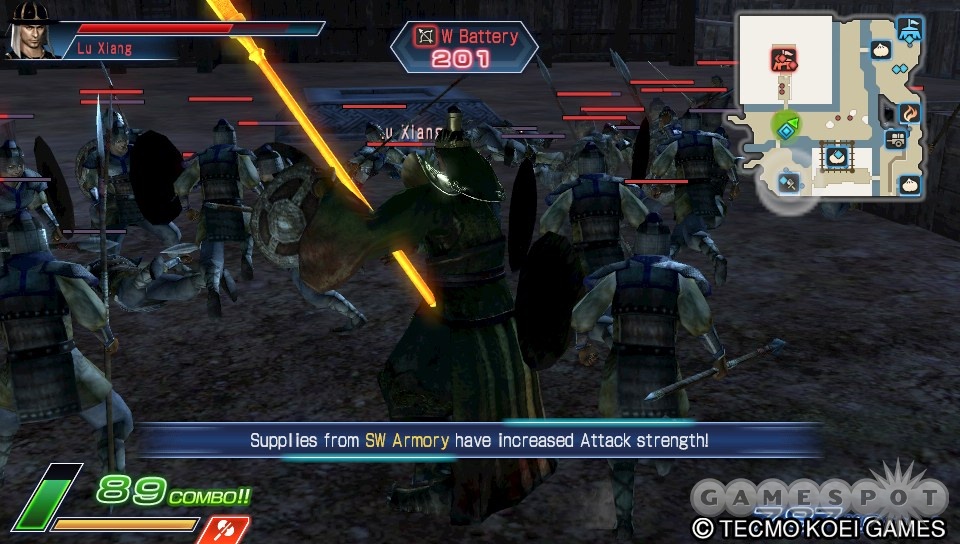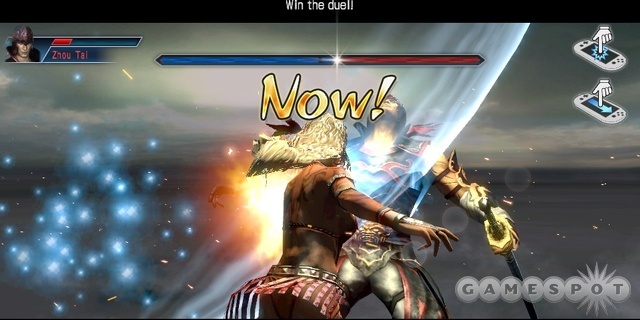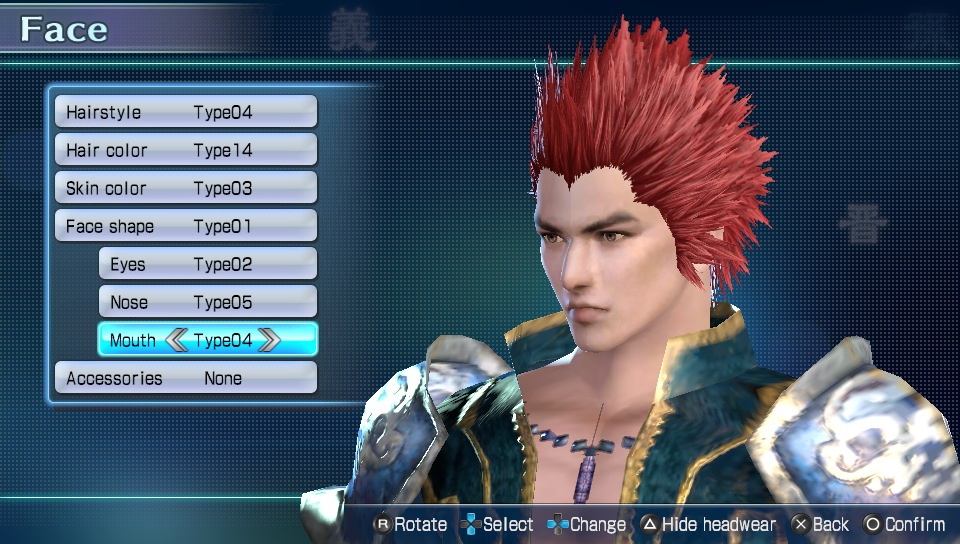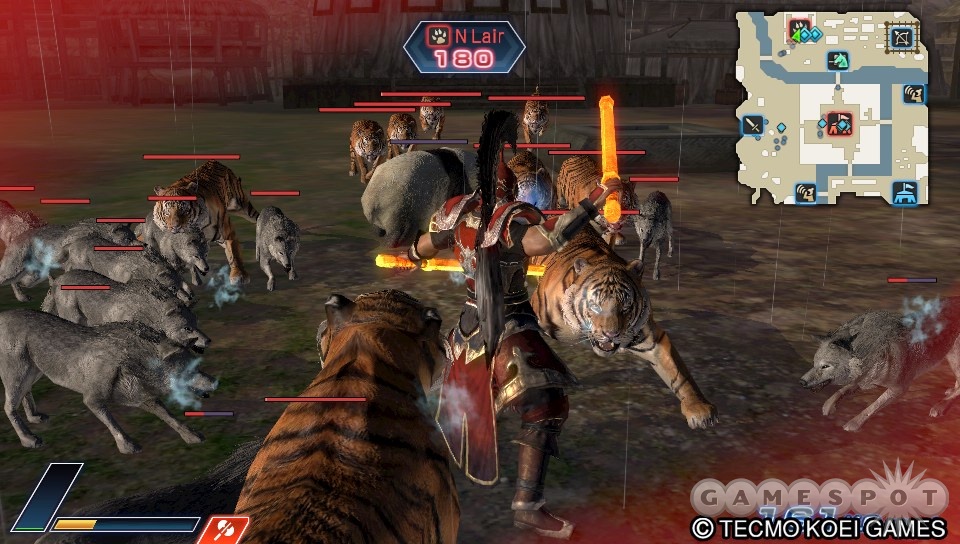There was a time when the Dynasty Warriors franchise wasn't just exciting for its devoted fan base. Mowing down hundreds of enemies in Dynasty Warriors 2 was a good, early display of the PlayStation 2's power. Since then, however, the series has been scorned for being monotonous and for iterating very little from one entry to the next. Dynasty Warriors Next attempts to pump some new life into the series' combat with the power of the PlayStation Vita by throwing touch and movement controls at you, which flirt the line between being interesting diversions and being unnecessary annoyances. Still, there can be something cathartic about destroying hordes of enemies with a few taps of a button, so it might be worth revisiting China for longtime fans or casual players who have been away from the series for a while.

Like all other games in the series, Dynasty Warriors Next is loosely based on the Chinese novel Romance of the Three Kingdoms, which itself was loosely based on ancient Chinese history. Therefore, the campaign mode tells a story you may be familiar with, dense with details about royal families, broken alliances, and ambition to rule. It often feels like the CliffsNotes version of a much larger epic, which it more or less is. The story is told in a relatively linear fashion, and you play as generals from different kingdoms as the plot demands. Some missions let you play as any available general from your kingdom, while others force you to play as someone specific. Different generals use different weapon types, which give them slightly different movesets.
While most Dynasty Warriors games are rightfully accused of being the same old song and dance, they do tend to differ somewhat outside of battle. In this regard, Dynasty Warriors Next is most like the Empires subset of games. Between battles you have a map showing you the different territories of the country, including who controls what. From here, you have some choice about where you want to attack next, giving the illusion that Dynasty Warriors Next is a turn-based strategy game. This comes into play most in the Conquest mode, which lets you play random skirmishes against AI opponents. Here, the strategy map plays out almost like a simplified game of Risk, with territories having different number values that come into play when attacking your opponent. In the campaign, however, the strategy element can be largely ignored, with the choice of missions being meaningful only if you want to grind out new weapons or items.
From the map screen you are also advised to choose stratagems to employ in battle. Stratagems are essentially abilities associated with generals that give you an edge over your opponent. You can select up to four of them per battle, and each has a cost associated with it that fluctuates depending on the mood of the general they're associated with. (If you've been using Cao Cao in every battle, for instance, his stratagem will cost more to use than if he's all fired up and ready for a fight.) Some stratagems are purely positive, such as those that increase the defense for your entire army or one that sends fire attacks to the first enemy base you attack. Others give a little and take a little, like one that greatly increases your attack power while also lowering your movement speed. These bonuses can be a big help in winning a battle (or just finishing it more quickly), though in many cases you may not need to use them at all.

Once you've decided to invade a territory, you are dropped directly into a battlefield filled with a variety of bases and a seemingly endless supply of allied and enemy soldiers. Each base on the map can be captured by eliminating the required number of enemy forces defending that base, which is a number that can change as reinforcements arrive. Your goal in almost every battle is simply to capture the enemy's main base while making sure he doesn't capture your own. Along the way it's advisable and sometimes required to capture smaller bases that can provide your army with certain bonuses if controlled, such as more reinforcements or occasionally boosted attack strength.
Keeping an eye on the minimap is key because it tells you where both your forces and your opponent's are, letting you know if you need to hoof it back to your main base to play defense. Thankfully you're never a one-man army, and you can use the touch screen to expand the map and issue attack or defend orders to certain allies on the fly, which adds just a hint of strategy to the action.
As you fight, two different meters fill up: your musou meter and your break meter. The break meter is very useful because it lets you capture any non-main base with a tap of the touch screen, with the added bonus that such captured bases cannot be retaken by the enemy. The musou meter lets you unleash a special magic move that can annihilate large groups of enemies at once. These moves come in two varieties: normal and speed. Normal musou attacks are activated at the touch of the circle button. They're more powerful when your health is low, but generally they're over quickly and leave much to be desired. They're unimpressive compared to speed musou, which are activated by touching the left and right sides of the touch screen at the same time.

These moves vary depending on which character you're using, but each uses a different aspect of the Vita's controls to wreak havoc on the battlefield. Some require you to tap the rear touch pad rapidly to summon fire or ice from the ground to attack enemies. Another attack has you drawing a circle on the touch screen to create a large whirlwind, while yet another has you shaking the Vita in time with the attack to create shock waves. Some actions are more tedious to perform than others, but they're short, and their effect is often useful.
The Vita's features are also used in sudden encounters, which are random ambushes in the form of quick-time events. So, for instance, while you cross the battlefield, you may be attacked by soldiers who jump at you. You are given a few seconds to move the Vita (or, thankfully, use the analog stick) toward the enemies and slash at them on the touch screen. Another encounter has archers shooting arrows at you, which you have to swipe away before they reach you. If you do it quickly, you might be rewarded with an item. If you fail, you're going to lose health.
Similar to these encounters but far more annoying are the occasional campaign interludes that feature very similar gameplay over a much longer period of time. They come at moments in the story when one hero is making a stand against an onslaught of enemies, or when there's a chase on horseback that has you tilting the Vita to avoid obstacles. Without exception, these are annoying and unfulfilling, and rather than being an interesting diversion, they end up being a big pain.

Almost as bad--or maybe worse, because they happen more often--are duels. These one-on-one touch-screen battles tend to happen once per battle. You need to watch your opponent and attack him while he's charging an attack, or swipe in a given direction when an onscreen prompt warns you that he's attacking. Duels play out like a poor-man's Infinity Blade, completely devoid of excitement or entertainment. There's no finesse or strategy to the combat. You just have to be patient in waiting for the game to notify you of the right moment to strike and then hope you don't accidentally swipe your finger in the wrong direction. They're not so bad near the start of the campaign, when they're short and relatively fresh. But they quickly become tiresome, and toward the end of the campaign they last far too long since enemies have more health.
Despite the new additions made possible by the Vita hardware, the game struggles with repetition at every turn, whether it's the action itself or the landscape and enemies you see each time. Don't read anything into the word "Next" in the game's title; this doesn't feel like an evolution of the franchise, only yet another mild iteration. Even the banter from enemies and allies during battles is reused far too often. In a new twist, you have no health bar, and your health regenerates over time, making it easier to simply take a break from fighting for a few seconds before mashing on buttons again, but that's not much of a change to the formula. In addition to the campaign and to Conquest mode, you can play Coalition mode with friends, in case you didn't get enough button mashing when playing alone.

On paper, aspects of Dynasty Warriors Next may sound fairly deep and involved, requiring some clever strategy to succeed. Sadly, this isn't the case. Battles are won by mashing on the square button a lot, occasionally throwing in some strong attacks or musou abilities. This is true to the series and should appeal to the audience these games often sell to. If this is your first Dynasty Warriors or you've been away from the series for a while, you might start off feeling pretty good about it. Sure, you're mashing one button a lot, but mowing down tons of enemies makes you feel powerful, and it's fun. But then it goes on for hours and hours with nothing really changing. It may be enough for those who want mindless action, but if you want something deeper, you have no reason to come to the Three Kingdoms.